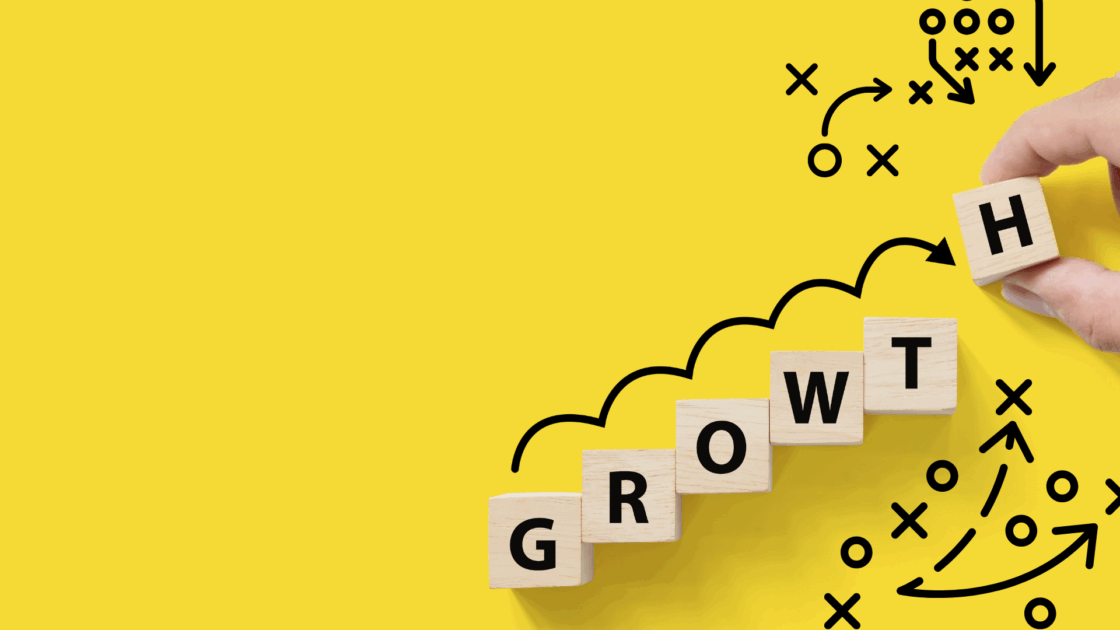Product Messaging Made Easy: A 4-Step Framework
Product Messaging Made Easy: A 4-Step Framework
You have an awesome product, service or app, and you’re ready to tell the world about it. What’s one of the next things you need to do? Have a compelling message.
Your product messaging serves as the basis for your marketing and communications. It inspires everything from your web content to your app store copy to your press release and beyond.
Over the course of my career, I’ve worked with many companies to successfully launch hundreds of products.
What I’ve found is that the majority have put in a lot of work to get to the point of taking their product to market. But they just can’t seem to get across the finish line with great messaging … I mean really, really great messaging.
It’s this messaging that propels them into the spotlight, creates that aha moment with their target audience and moves them to action.
So I use a four-step framework to create great product messaging that’s so easy, anyone can do it.
Download the messaging framework template.
To start, you’ll need to answer the following four questions in the most compelling way possible:
- Why does your product exist?
- What is it?
- What does it do?
- How does it do it?
Let’s dive in.
1. Why does your product exist?
Why do you believe your product, service or company exists? What is the big problem that you’re solving or pain point you’re addressing? What trends are occurring that make it the perfect time to present your product?
Tableau Software is a good example. Three guys from Stanford came together to solve one of the most challenging problems in software—making databases and spreadsheets understandable to ordinary people.
Who wouldn’t agree that’s a great problem to solve, especially all of us who struggle with pivot tables, crosstabs and boolean queries?
Tableau addresses the fact that data is everywhere and to be able to use this data, you need to be able to understand it. Simple and to the point. We get it.
Another example is Shopify, the e-commerce platform for online stores. In 2004, the founders were seeking an online store to sell snowboard equipment. They could have done it through a marketplace, but they wanted to have a direct relationship with their customers and build their brand.
An easy solution didn’t exist, so they built their own. And now are making commerce better for everyone. I’ll take two.
The Bombas sock company set out to fix the problem that most of us never knew we had: that annoying seam running across our toes. Sometimes you need to create a problem or specifically call it out to get your point across.
2. What is your product?
Seems like a simple thing to describe, right? However, you’d be surprised at how hard it can be to create something compelling without guidance.
To answer this question in the most compelling way possible, you need to know your competition and what makes your product truly different and unique.
So if you haven’t done that yet, you can pause here and complete your competitive analysis.
(Remember, don’t just do a feature comparison. Be sure to analyze their messaging. What’s the headline on their homepage? What story do they tell in the “About Us” section? What’s the opening copy block on their App Store listing?)
Back to the question at hand: What is your product? The answer to this question is comprised of two elements: the differentiator of your product coupled with the category in which the product competes.
To clarify:
What is it? = Differentiator + Category
Differentiator
Your differentiator is what makes your product different from all other similar products out there. What makes it so much better or unique?
There are a variety of differentiating phrases you can use to make your product stand out and many are listed later in this article.
Category
When you think about your category, it’s the category of products or services in which you’re competing.
If, after your research, you find that your differentiator doesn’t translate into a broad category, hone in on your category some more (or maybe you need to invent a completely new category–more on that in a minute).
For example, if you can’t say your product is the No. 1-selling ‘X’ in the world, what about the No. 1-selling ‘X’ in your country or No. 1-selling within in a specific demographic or a certain type of customer?
Let’s look at some examples to better understand how the differentiator plus the category can come together to describe what your product is
Take BMW as the first example. For years, the car’s identity has centered on being “the ultimate driving machine.” If we break this down, the differentiator in this case is “the ultimate” and the category is “driving machine.”
(Technically the category is automobiles, but BMW elevated the idea of a car to a driving machine and created its own category, and you can do that with your offering, too.)
Oracle NetSuite claims they are “the #1 Cloud ERP.” Their differentiator is “the #1” and their category is “cloud ERP.” This phrase is front and center on their homepage marquee and nearly every piece of collateral.
Symantec claims “the strongest cyber defense platform.” “The strongest” is the differentiator and “cyber defense platform” is the category.
This approach is also used for consumer products, like Coors Brewing Company, which dubbed its beverage “the world’s most refreshing beer.” The differentiator here is “the world’s most refreshing” and the category is “beer.” You get the idea.
Here’s a handy list with differentiators that you can explore:
-
-
- The #1
- The #1-selling
- The best
- The best-selling
- The best value in
- The easiest to use
- The editors’ choice
- The fastest
- The favorite
- The fan favorite
- The first-ever
- The largest
- The leading
- The most-advanced
- The most-awarded
- The most-innovative
- The most-complete
- The most-powerful
- The most-preferred
- The most-recommended
- The most-trusted
- The newest
- The only
- The proven
- The strongest
- The top-downloaded
- The top-selling
- The top-rated
- The ultimate
You can combine and stack differentiators to make your statement even more compelling. For example, you might have “the top-rated, best-selling ‘X’.”
Or, you may want to add any one of the following phrases in front of your combined differentiators to further refine or expand your message. (For example, “The world’s top-rated, best-selling ‘X’.”)
- The world’s
- The Earth’s
- The nation’s
- The country’s
- The region’s
- The industry’s
3. What does your product do?
Now that you’ve defined why your offerings exists and what your product is, it’s time to start thinking about what it does. Here, we’re not talking about how it functions, we’re talking about what it does in terms of benefits. (All those other bells and whistles can be talked about in the next step.)
And we’re not talking about all the things it does, just the one overarching benefit that your product offers or allows your target audience to do.
For example, Salesforce.com chose this as their overarching benefit: “Connect to your customers in a whole new way.” We all know that Salesforce does a lot of CRM tasks, from tracking contacts and calendars to sending emails and monitoring our sales funnel, but they resolved that this is the main benefit they are going to hang their hat on.
Let’s take the classic iPod: “1,000 songs in your pocket” is the one main benefit that Apple claimed back in the day. Regardless of any other features it had, like the 5GB hard drive and diminutive form factor (well, compared to a Walkman). The big, overarching benefit boiled down to these five simple, well-chosen words.
For years, Olay moisturizer touted its main benefit: “Makes you look up to 10 years younger in four weeks.”
Here’s are some active verbs that you can choose to use as the first word in the what-it-does statement:
- Adds
- Assigns
- Automates
- Catalogs
- Coordinates
- Comes with
- Consolidates
- Converts
- Creates
- Delivers
- Displays
- Eliminates
- Finds
- Generates
- Gives
- Helps
- Identifies
- Includes
- Imports
- Keeps
- Knows
- Manages
- Organizes
- Plans
- Puts
- Prints
- Records
- Reports
- Schedules
- Searches
- Secures
- Shows
- Showcases
- Stores
- Streamlines
- Tracks
- Transforms
4. How does your product do it?
This is the step where you’re going to prove the claims that you have made. How does your product do what you’re claiming it can do?
Here you can get into the nitty-gritty details. If we look at the Olay moisturizer example again, they said it can make you look 10 years younger in four weeks.
So the next logical question is: How does it do that?
- Plumps the skin with hydration.
- Firms the skin to improve elasticity.
- Helps correct the look of wrinkles.
Remember to begin each bullet point with an active verb and eliminate superfluous wording like “it allows you to” so that your statements are direct and impactful.
Put all 4 steps together to create your messaging statement
You’ve put in the research and the work. You’ve completed all four steps in the messaging framework. Now it’s time to pull it all together.
You’ll first start with a few sentences detailing why the product exists. Then your next paragraph will put together your statements from Steps 2, 3 and 4.
Let’s use a fictitious stamp collector app as an example to put this all together. We’ll call it Stamp Collector Pro.
1. Why does it exist?
Organizing your stamp collection can be a very cumbersome task involving large binders and hundreds of plastic inserts to hold stamps, making locating and sharing specific stamps time consuming and very frustrating. That’s why we invented Stamp Collector Pro.
2. What is it?
Stamp Collector Pro is the world’s most-complete stamp collection organization system.
3. What does it do?
Stamp Collector Pro organizes all the details of your stamp collection in one place.
4. How does it do it?
Stamp Collector Pro does all this and more:
- Stores unlimited details about each stamp.
- Displays a picture of each stamp.
- Tracks purchase price and other purchase details.
- Prints inventory lists and labels with barcodes.
- Lets you share your collection on Facebook, Instagram and Pinterest.
- Imports data from Excel, Numbers and a variety of other formats.
Stamp collector pro complete messaging statement
Organizing your stamp collection can be a very cumbersome task involving large binders and hundreds of plastic inserts to hold stamps, making locating specific stamps time consuming and very frustrating. That’s why we invented Stamp Collector Pro.
Stamp Collector Pro is the world’s most-complete stamp collection organization system. It organizes all the details of your stamp collection in one place. It does all this and more:
- Stores unlimited details about each stamp.
- Displays a picture of each stamp.
- Tracks purchase price and other purchase details.
- Prints inventory lists and labels with barcodes.
- Lets you share your collection on Facebook, Instagram and Pinterest.
- Imports data from Excel, Numbers and a variety of other formats.
To complement your core messaging, keep in mind that it’s always important to have proof points, such as customer quotes, app store ratings, media mentions, awards or notable statistics.
For example, in our stamp collection app, you can add on the following just before your call to action: “It has more than 1,000 5-star ratings on the App Store, and it was awarded Editors’ Choice 3 years in a row.”
It’s one thing to say how great your product is, but having others say how great it is makes the entire story even that much more compelling.
How your messaging statement will be used
Your messaging will serve as a guiding light for all your marketing and communications, from your public relations to your marketing campaigns and your content assets.
The messaging statement is the foundation, but it will be tweaked as needed to be relevant for different purposes, assets, verticals and personas you’re serving.
Let’s look at examples of how a messaging statement might be leveraged during a cross-functional marketing campaign.
- Your PR team will want to generate awareness around the “why” problem statements through things like thought leadership articles, interviews, research statistics.
- Your advertising team will also look at the problem statements to come up with creative ad copy and attention-grabbing headlines.
- Your marketing team might put together a webinar or video that shows your target audience how your solution solves the problems they’re facing, and use the messaging to create an outbound email campaign to drive registrations.
- Your web team can use the messaging as a base to write copy for important landing pages designed for conversions.
At the end of the day, you’ve spent a lot of time perfecting your product. And sometimes, the inclination is that it will speak for itself.
But what you say and how you say it—the story you bring to the market—can make or break your success. Words and ideas are a powerful tool for moving people to action.
Every product has a story, now go tell yours.
Download the Messaging Framework Template
(Note that examples from companies listed in this article are not all Aventi Group clients and were gathered from publicly available content.)
-






